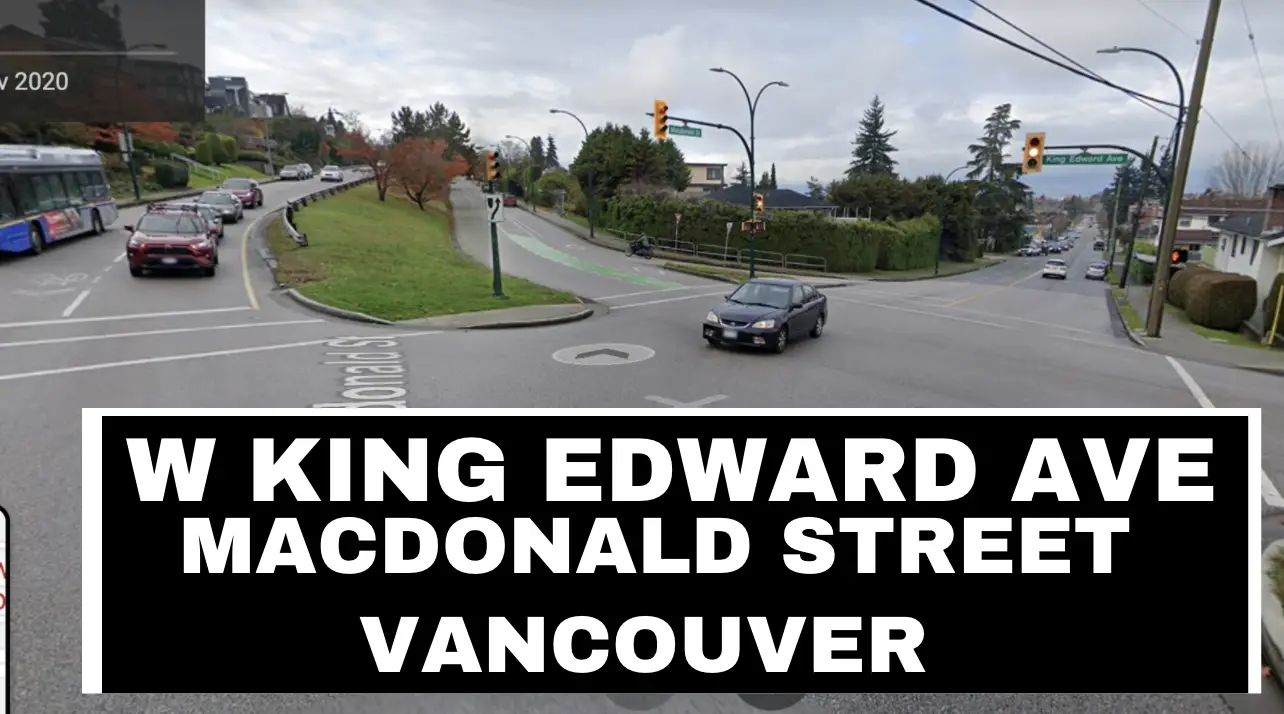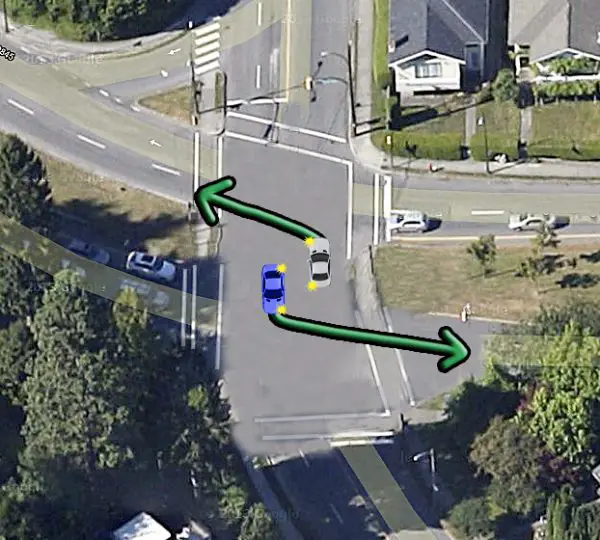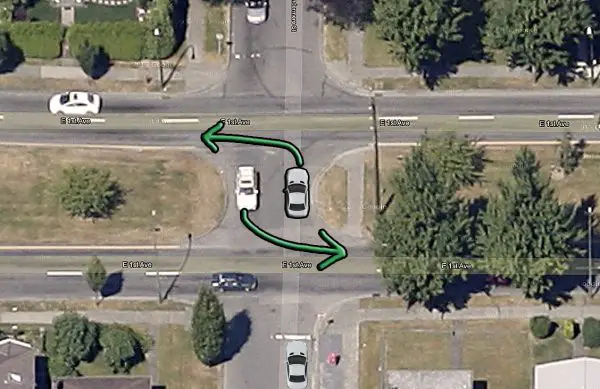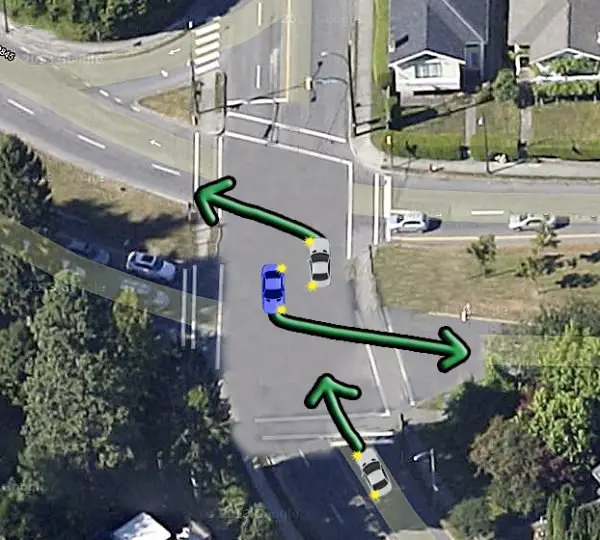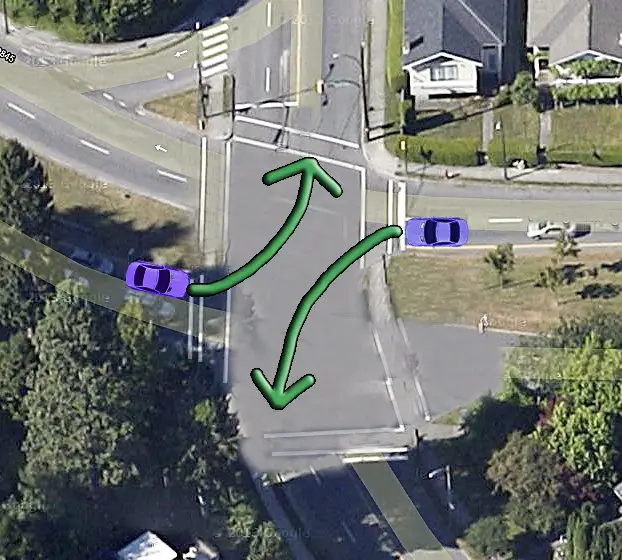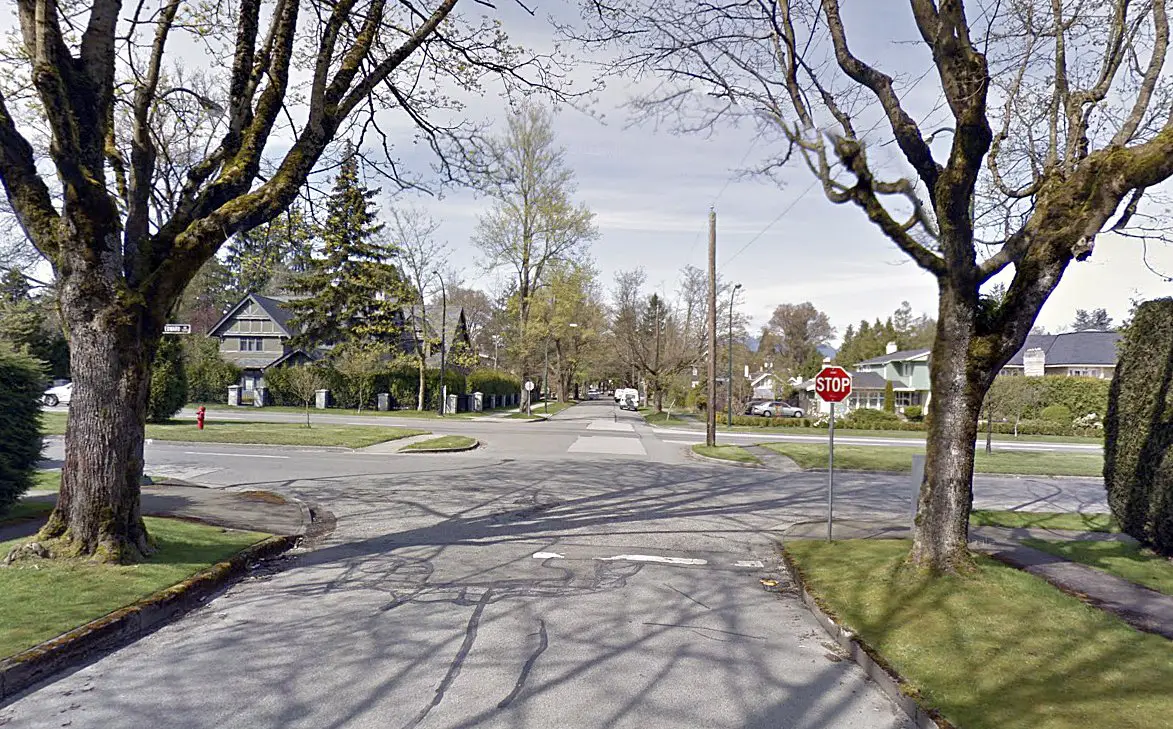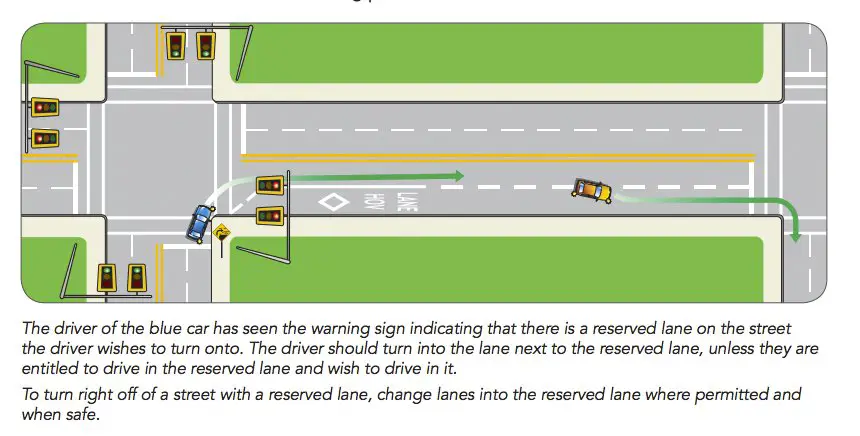Uncommon Intersections
Vancouver is a beautiful city. But it leaves us with a slight predicament when intersections are much larger than normal due to being divided by a boulevard. For example, King Edward and MacDonald. Many drivers get confused here and with good reason, and it just happens to be situated beside one of the ICBC road testing locations. [ICBC Road Test Class 5 vs 7: Prepare & Conquer].
First of all, review some basic principles of turning left.
Entering The Intersection at King Edward And MacDonald
When turning left, it’s important to enter the intersection and line up your vehicle with where you are about to turn. This sets you up to have a short, easy, and efficient turn. And therefore, a safer one. For complete details on how to safely turn left, check out my epic guide.
The other reason to enter the intersection is a legal one. If you’re inside the intersection when the light is green, the law allows you to leave the intersection when it is safe. This is regardless of the traffic light color.
In Vancouver, it seems the light is commonly yellow, or even red, by the time it is safe to leave. And that is perfectly fine. Check out my full guide to Yellow Traffic Lights to learn more.
Keeping Tires Straight
Whenever possible, you should try to keep your vehicle and tires straight whenever waiting to turn left. This is in case of a rear-end collision.
With the vehicle straight, the impact would push you merely straight ahead. With the vehicle and/or steering wheel turned to the left, the impact may push the vehicle toward the left. And, potentially into the path of an oncoming vehicle.
There are a few exceptions to this rule at particular intersections. For this intersection, it is possible to keep the vehicle straight, and so you should. Check out my blog Steering Techniques for Safe Driving & Car Control to learn more about proper steering.
Right Of Way
Left turns have zero right-of-way when turning left at a green light. This means nobody should have to slow or stop for you, worry about you, or be surprised by you when you’re turning left.
You must yield to straight oncoming traffic, pedestrians on your left, and oncoming right-turning traffic, if applicable.
King Edward and MacDonald: Visibility
This also means you remain stopped and wait patiently in cases where you can not see whether or not there is oncoming traffic.
Turning Left At King Edward & MacDonald
What To Do
At King Edward and MacDonald, two opposing vehicles can enter far enough into the intersection to a point where they are both completely past one another.
The intersection is so large that the vehicles won’t be in each other’s way. Both vehicles can still line up their vehicle with where they are turning.
When you do this you have potentially better visibility while keeping your vehicle straight. You have a shorter turn to your lane, and you are out of the way of at least one other oncoming left-turning vehicle.
If there are already 2 left-turning vehicles in either direction already in the intersection, the 3rd vehicle should stop and wait behind the white line to avoid blocking the entire intersection.
Notice that this is the exact same thing we do when we’re turning from a side street onto 1st Avenue, for example.
Avoid turning ‘in front’ of oncoming vehicles, as you normally would.
It would be awkward. It would make it more difficult for both vehicles to have good visibility. And, it would increase the chances of having problems with thru-vehicles attempting to go around the left-turning vehicles.
It would also encourage you to angle your vehicle, which we don’t want.
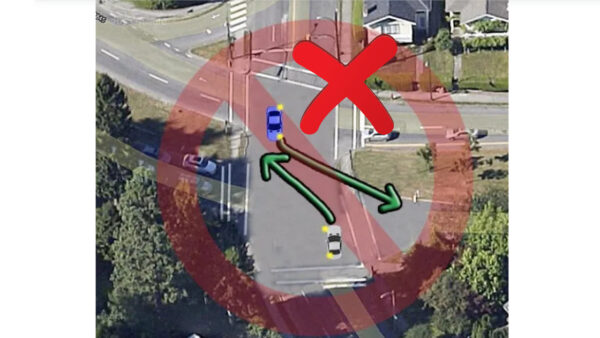
Now, this is all fine and good until rush hour. Then, multiple vehicles want to turn left, and multiple vehicles want to go straight.
Say you want to turn left but there’s already a vehicle inside the intersection waiting.
In that case, it may be wise to stop behind the white stopping line. If the light goes yellow, you aren’t in an awfully precarious and possibly unsafe position.
If you’re turning onto MacDonald, then turn like a regular left turn. That half of the intersection is more ‘normal.’ I mean, normal is just a setting on your laundry machine. But you know what I mean.
I was at the stop sign on Valley Drive and King Edward and planning to go north straight through the double intersection.

Another driver going west on King Edward turned left at Valley and then tried to immediately turn left again in front of me as he wanted to go east on King Edward towards Arbutus.

Before he started turning again, I started to proceed through the intersection. The other driver became irate and said that he should go first as I was at the stop sign.

From what I read on-line, the driver turning left should yield to the driver going through the intersection. Can you please clarify what should happen in this instance? Thanks!
It doesn’t seem right, someone basically doing a U-turn and getting mad at you for wanting to just drive normally. This is a stop-sign-controlled intersection, so the following should apply. However, it seems quite like an uncontrolled intersection once you’ve entered the ‘middle’ so these rules also apply.
Stop-Sign-Controlled Intersection

Uncontrolled Intersection

I admit these are confusing. Especially when it seems like, for you, it’s a stop-sign-controlled intersection; but for him – it’s a different intersection. (How many intersections is this? One or two, I really don’t know).
I suppose the question is, which vehicle was ‘in the intersection’ first, as the other should yield in that situation. If your vehicle was still stopped behind the stop line, then you probably weren’t ‘in the intersection’ before him.
But if you had already moved forward and were already rolling into the ‘middle,’ then perhaps he should have yielded. Was that a legal U-turn anyways?
City of Vancouver By-Laws
Drivers Must Not Do a U-turn
- On any through street
- At any intersection where a stop sign has been placed, or where a traffic control signal has been installed (a traffic light intersection)
- At any intersection where the driver must reverse to complete the U-turn, or where the driver would be interfering with other traffic, or where it is not safe to complete.
- On any street between intersecting street
- At any lane intersection
BC Motor Vehicle Act U-Turn Laws
168 Except as provided by the bylaws of a municipality or the laws of a treaty first nation, a driver must not turn a vehicle so as to proceed in the opposite direction
(a) unless the driver can do so without interfering with other traffic, or,
(b) when he or she is driving
(i) on a curve,
(ii) on an approach to or near the crest of a grade where the vehicle cannot be seen by the driver of another vehicle approaching from either direction within 150 m,
(iii) at a place where a sign prohibits making a U-turn,
(iv) at an intersection where a traffic control signal has been erected, or
(v) in a business district, except at an intersection where no traffic control signal has been erected.
Boulevard Driving
This type of intersection confuses many learner drivers in ways that other intersections just can’t compare to.
Really though, it is simply a 2-way stop. It just happens to be a very Large 2-way stop. There happens to be some grass in the middle of the road. But the rest of the rules, in terms of right-of-way, are the same. That means:
The two vehicles facing the stop signs must yield to thru traffic. After you yield to one direction of traffic, you may drive to the middle of the road beside the grass and yield to the next half.
You were the one facing the stop sign, and others are not, therefore you’re the one who must yield.
Whichever car entered the intersection first should go first.
If two vehicles arrive at the same time, the left-turning vehicle should yield to the straight-thru vehicle and/or right-turning vehicle. Try to get eye contact.
If you want the other driver to go first, simply stop your car and make eye contact with the driver. If the driver sees you are looking left & right for the cross traffic, then he will probably perceive that you are getting ready to make a move. Avoid waving at drivers to go first (liability issues).
Question about HOV/bike lanes, dotted lines, turning and merging.
The question is specifically regarding the intersection at McDonald and West King Edward. Travelling south on McDonald, and turning right onto King Edward, one has to cross over the HOV/bike lane. Should you immediately cross over the dotted lines before the line turns solid, which would mean essentially turning into the left lane. Or should one turn directly into the HOV/bike lane and then travel a short distance and then change lanes when the dotted lines reappear?
Turning Right when there’s an HOV Lane
In this situation, simply turn into the lane you will actually be driving in.
At this particular intersection, it seems to be a very short HOV lane with the sole purpose of facilitating the bus stopping at the bus stop.
